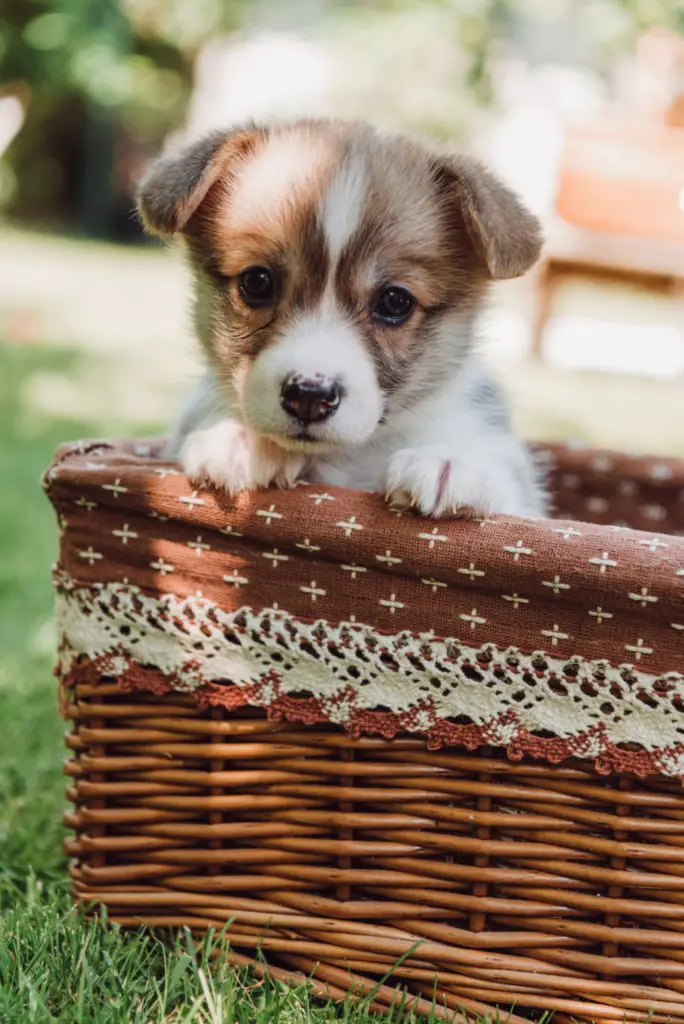Did you choose to crate train your new puppy or adult dog? Using a crate can help with potty training, provide your dog with a safe and secure place to stay when left alone, and make traveling with your dog in the car much easier.
Is it safe to crate your dog for 12 hours, and what is the maximum amount of time you ought to do so?
The short answer is no, a dog shouldn’t be crated for 12 hours a day, even though he can sleep through the night in one. This is way too much time spent in isolation. Dogs are social animals that require interaction with their owners (and occasionally other dogs) as well as enrichment activities in order to thrive.
We’ll go over the maximum amount of time your dog should be crated for and some alternatives to keeping your dog in a crate for extended periods of time.
How long can a small dog hold its pee?
A healthy dog can go six to eight hours without going potty. Overall, a dog’s capacity to hold its urine has very little to do with its size.

How long a dog can hold its bladder depends on the following factors:
Puppies, no matter what the breed is, are still developing. As a result, their bladder muscles aren’t as powerful as those of adults. One month old puppies are only able to hold their bladder for one hour. As the dog gets older, its tolerance becomes longer. Please read this article to learn how long a dog can wear a thundershirt.
Dogs can hold their urine for an hour for every month they are old, up to the age of eight months. The longest your dog can go without urinating is 8 hours once it is 8 months old. This is enough for a full night’s sleep.
Although some dogs can go for up to 10 hours, it’s not advisable to make your dog endure this. Similar to humans, animals that hold their bladders for too long may experience urinary issues. please read here why dose my dog stretch so much.
Additionally, senior dogs frequently have issues controlling their bladder. Many can’t hold it as long as they used to. The best thing you can do for your senior dog’s health is to take it outside every four hours. Additionally, this will prevent mishaps when the elderly dog tries to open the door.
Aside from age, you also have to factor in the health of the canine. Younger dogs with urinary problems will often suffer from incontinence, making it difficult for them to hold their pee overnight.
Diabetes and urinary tract infections are two of the most prevalent medical conditions that cause dogs to frequently urinate. Your dog’s capacity to hold its urine will also be impacted by kidney disease, bladder stones, and specific medications.
Dogs who are anxious are more likely to urinate outside of designated potty times. Their nervousness increases their urge to empty their bladders.

You should provide your dog with a peaceful “dog cave” where it can unwind and sleep until morning to stop this from happening at night. Please read here how to cure dog anxiety.
During summer, dogs drink more. However, because they do not perspire, they must urinate in order to cool their bodies. So the more your dog drinks, the more it urinates. Please read this article to learn how to keep a dog cool indoors.
Meanwhile, as the weather gets colder, your dog will urinate and drink less.
Your dog’s ability to hold its bladder will depend on how you train it. If you don’t teach dogs how to control their bladder, they won’t learn how to This is the main purpose of potty training your dog. I covered a few pointers below that will help you avoid nighttime mishaps.
Is It Bad For Dogs To Hold Their Pee In?
Generally speaking, most large, healthy adult dogs could hold their urine for 12 hours if necessary. But if they are made to do it frequently, it is bad for them. It might increase their risk of contracting certain illnesses.
If a dog’s bladder is forced to hold too much urine, it may eventually stretch. Over-distention is what this can do to the muscles. It can cause your dog to leak urine and is permanent.
Your dog’s urine flushes toxins and microorganisms from the kidney, bladder, and the tiny tubes that connect them when it urinates. An infection is more likely to develop in this area the longer bacteria and toxins are present. Additionally, crystals and stones may form, and these obstructions may be fatal. If this problem arises in your dog, your veterinarian might suggest a special food for urinary health.
The cells lining the urinary tract will have more time to react to carcinogens (chemicals that cause cancer) in urine and cause genetic mutations that may lead to cancer.
Signs Your Dog Has To Pee
Most dogs start exhibiting these symptoms when their bladder is roughly 3/4 full. This should allow you enough time to complete your task and take them outside. You need to learn to identify your dog’s signals. These are common ones.
Every dog is different. Consider the most recent accident if you are having trouble figuring out what your particular dog’s signal is. Write down your dog’s actions just before they ruined your home, then keep an eye out for those actions going forward.
If you can’t keep an eye on your dog, keep them in a designated area. The most ideal form of confinement is crate training. This is because the dog is given too much space in other forms of confinement. The most common reason pet parents fail to potty train their pets is too much space.
The only technique that teaches a dog to hold their bladder and where to go is crate training. It is the only option for overnight training. To crate train a dog you need to:
- You can put divider to make a big crate smaller
- Throw the cookie, or give them a Kong
A dog cannot urinate when they are overstimulated, which is why this occurs. This is biology. Our nervous system shuts down that part of our body. Outside is overstimulating. They unwind as soon as the dog enters again, and the nervous system restarts the digestive system. Therefore they can potty. This is why it’s crucial to return a dog to its crate if it was unable to relieve itself outside. Try again in 15-30 minutes.
Now your dog has the freedom to play and romp. Knowing your dog’s schedule is important. This is due to the fact that you must monitor their water intake and the intervals between potties. Your dog has 30 minutes of play time if he urinates every 30 minutes before returning to the outside or crate.
Confine them to a small kitchen, laundry room, or basement. If you have an open floor plan install buy baby gates that install on the side of your walls. Pull them across to limit your dog’s ability to roam. This does not train a dog to hold their bladder or go outside. Instead, it prevents a dog from soiling hard to clean areas like carpets.
Added Benefit:
If you do not have baby gates you can get a drag leash. Drag leashes have dual purposes. The first is to limit where the dog can go and the second is to accustom the dog to having a leash. Drag leashes differ from regular leashes because they do not have a loop at the end. The leash prevents furniture from snagging on the leash. Since the dog has free range of the house this does not train a dog to hold their bladder or go outside. Instead, it allows you to limit their ability to go in off-limit spaces like carpeted bedrooms.
The teether serves the same purpose as the leash confinement. However, it restricts them to a specific area. Most teethers allow too much space. The majority of dogs will urinate at the end of their teether. By doing this, a dog is not taught to hold their bladder or go outside.
These are free standing areas. They are helpful with open floor plans. However, most ex-pens are too large. The dog will carve out a corner to pee in. By doing this, a dog is not taught to hold their bladder or go outside.
The best thing we can do for our dog is follow the routine. Regularly taking your dog for a pee break will train them to hold it. Write down your dog’s current potty schedule. Stick to it, then gradually adjust it to fit your needs.
One error pet owners make is only increasing the time they let their dog out 15 to 30 minutes at a time. This does not teach a dog to hold their bladder. The moment you find a schedule that works, you must begin lengthening the intervals between breaks. So, if your dog needs to relieve himself every 30 minutes, you should increase that to every 35. Once you have determined your dog’s schedule, you can only do this.
FAQ
Is 12 hours too long for a dog to go without peeing?
In conclusion, even though an adult dog can go for a maximum of 10 to 15 hours without urinating, it’s best to let them go every 6 to 8 hours. The exceptions to this rule are young puppies, who require more bathroom breaks, and your senior dog, who requires a little more attention in this area.
How long can a dog hold their pee overnight?
Dogs can sleep for 8 to 10 hours without having to go to the bathroom. However, every dog needs to be let out after eating or drinking, waking up, and playing for a while. Health: Age, sex, body size, and general health all affect how frequently dogs urinate.
Can dogs hold pee for 15 hours?
The majority of adult dogs can go 8 to 10 hours between urinations, but this varies according to their age, sex, size, and general health Younger, smaller dogs require more frequent urination than older, larger dogs do.
What happens if a dog holds his pee too long?
The practice of making your dog hold his or her pee for an extended period of time could be harmful to its health. Even though he might be physically capable of doing so, prolonged holding it in can result in urinary tract infections or urinary crystals and stones. The inability to urine can also lead to behavioral issues.
